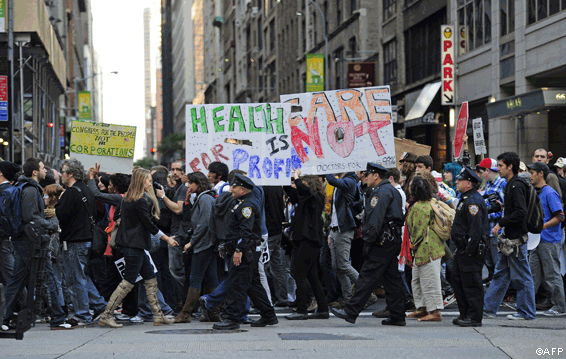Herman Cain’s 9-9-9 Tax Plan
The Tax Policy Center has estimated the distributional effects of a fully-phased-in version of Herman Cain’s 9-9-9 tax plan. Summary tables are available here ![]()
![]() View this page as a PDF
View this page as a PDF
Herman Cain’s plan would eliminate the current individual income tax, corporate income tax, payroll tax, and estate and gift tax and substitute three taxes imposed at a 9 percent rate: 1) a 9 percent “national sales tax” 2) a 9 percent “business flat tax”, and 3) a 9 percent “individual flat tax.” Based on descriptions from the Cain campaign website and Fiscal Associates, the firm that analyzed the proposal for the Cain campaign, we conclude that all three taxes are versions of well-known forms of consumption taxes, although collected in different ways and with a few modifications.1 The bases of all three taxes are essentially the same as the base of a national sales tax. The basic structures of the three taxes are:
1. National Sales Tax: This is a retail sales tax, collected on sales to final consumers. It is imposed on all sales to households, non-profit institutions and governments, as well as sales by the business activities of government and non-profits (for example, revenues of non-profit hospitals.) The tax is modeled on the Fair Tax proposal that has been proposed by Americans for Fair Taxation and was first introduced in Congress by Representative John Linder (R-GA) in 1999. The tax rate is 9 percent of the total price (including tax) charged by businesses to consumers.2
2. Business Tax: This is a subtraction method value-added tax, sometimes called a business transfer tax (BTT). All businesses would pay a 9 percent tax on all sales minus purchases from other businesses (including purchases of investment goods). This is essentially the same as a retail sales tax, except that it is collected in pieces on the value added at each stage of production. In the aggregate, those pieces add up to retail sales.
3. Individual Flat Tax: As described by Fiscal Associates, this is a version of the Flat Tax originally developed by Professors Robert Hall and Alvin Rabushka and endorsed in the past by former House Majority Leader Dick Armey, Senator Richard Shelby of Alabama, and former Presidential candidate Steve Forbes. The flat tax is a subtraction method value-added tax, similar to the BTT, with the exception that businesses may deduct wages paid and workers must report and pay taxes on their wages. With a single rate, however, it makes no difference whether the worker or the business remits the tax. (The original flat tax proposal would have allowed workers to claim exemptions for themselves and dependents, but the Cain proposal has no such adjustment.)
The three taxes include several modifications.
a. The Cain plan would allow businesses to deduct dividends paid under the business tax (BTT), but would include dividends received in the base of the individual flat tax. Because the rates of the BTT and the flat tax are the same, this treatment is equivalent simply to exempting dividends received by individuals from tax. But the modification would provide a tax subsidy for dividends paid to tax-exempt investors, such as non-profit institutions, pension plans, and qualified retirement plans.
b. Wages paid to government workers would be part of the tax base under the individual flat tax, but not under the retail sales tax or the BTT. (We assume that the savings to the federal government from not having to pay retail sales tax and BTT on wages would offset the revenue loss from not taxing these wages.)
c. The Cain plan would allow individuals to deduct charitable contributions from the base of the flat tax. These deductions would reduce the net income from wages and dividends that is subject to the 9 percent tax. The deduction would be available both to those currently claiming the charitable deduction and to those who contribute to charities but do not currently itemize deductions on their income tax return.
We assume that the national sales tax and business flat tax are imposed independently on businesses so they sum to sales tax rate of 18 percent. The individual flat tax, however, is applied to real wages that have been reduced by 18 percent by the other two taxes. The 9 percent individual tax thus applies to only 82 percent of tax-inclusive consumption, making its effective rate 7.38 percent of all consumption. Therefore, the three taxes combined are equivalent to a 25.38 percent national sales tax, with the above mentioned adjustments for dividends paid to tax-exempt entities and charitable contributions.
The Cain campaign documents also contain some discussion of deductions for empowerment zones that might relieve some of the tax burden on low wage workers. We have not received any details of these provisions and thus cannot estimate them. If such relief were to be provided, it could relieve some of the burden at the low end of the income distribution, but would reduce the net revenue raised by the proposal.
The Tax Policy Center estimates that, if fully phased in, the plan would raise about $2.55 trillion of revenues at 2013 levels of income and consumption, virtually the same amount that would be collected if current tax policy were in place that year (that is, if 2011 tax law, other than the payroll tax reduction, were extended). However, the plan would raise about $300 billion less revenue than would be raised by current tax law, under which most 2001-2010 tax cuts would have expired by 2013.3
Read the source article here.
Comments »





